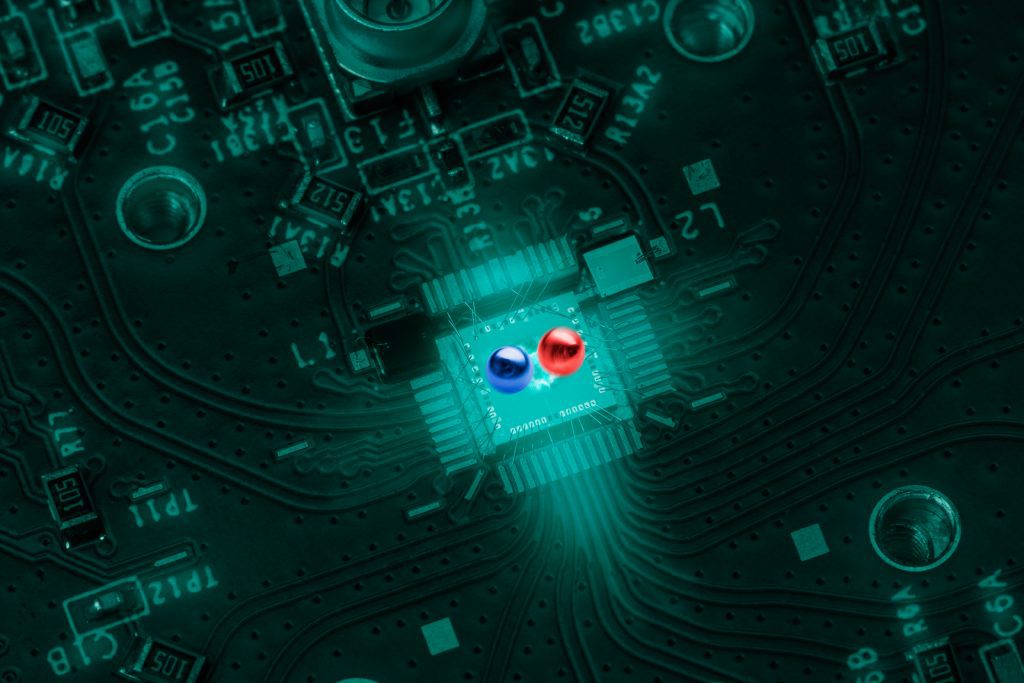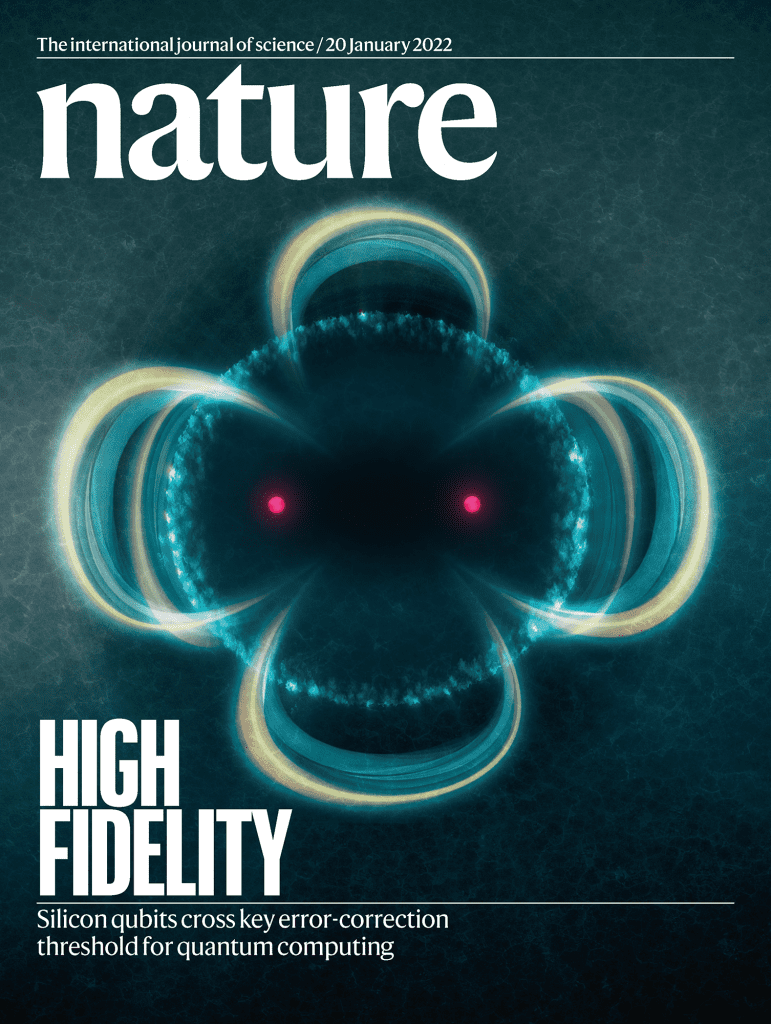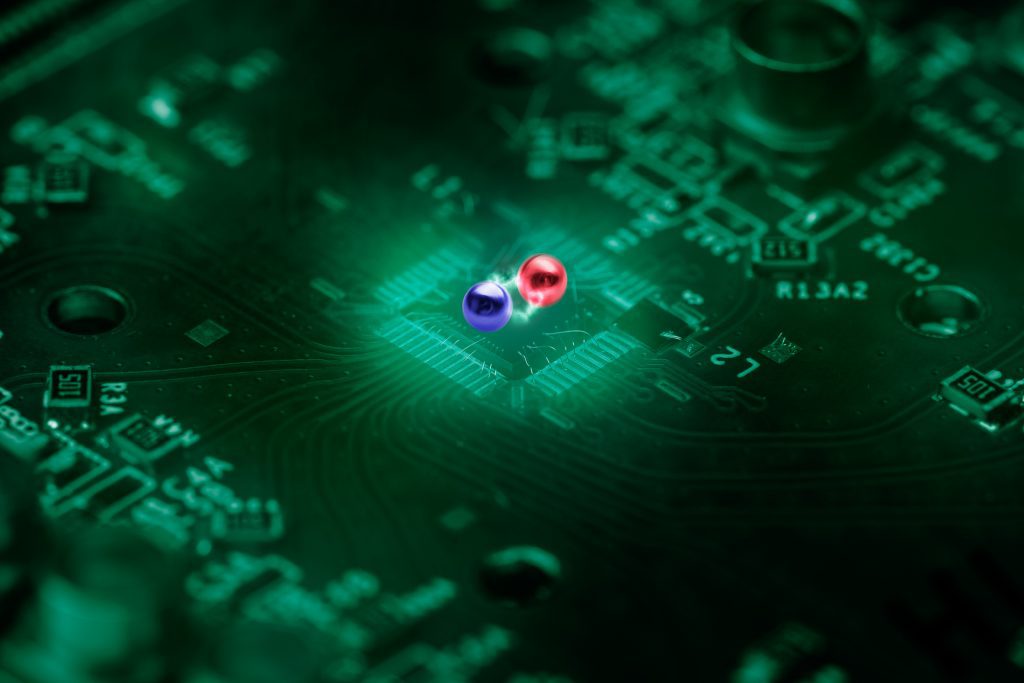19.01.2022Quantum Computing
Semiconductor spin qubits gain further credibility as leading platform for quantum computing

Researchers at QuTech—a collaboration between the Delft University of Technology and TNO—have taken an important step for semiconductor spin qubits by surpassing the 99% barrier for two-qubit gate fidelity. They report on their findings in Nature on 20 January 2022 and are featured on the issue’s cover. Two independent works from groups at UNSW Sydney and at RIKEN report similar results in the same issue of Nature.
Advantages
Semiconductor spin qubits are well positioned as the building block for a future quantum computer. Among all the candidate platforms, electron spins in semiconductor quantum dots have advantages for their long coherence times, small footprint, the potential for scaling up, and the compatibility with advanced semiconductor manufacturing technology. A major challenge however is to implement operations with sufficient accuracy to arrive at a reliable outcome. The higher the accuracy—or fidelity—of the operations, the higher the likelihood that near-term applications for quantum computers come in reach. And the higher the likelihood that errors can be corrected faster than they appear.
The central requirement for correcting errors is expressed in terms of an error threshold. Reaching two-qubit gate fidelities above 99% has been a long-standing major goal for semiconductor spin qubits. Single-qubit operations of spin qubits in quantum dots achieved fidelities of 99.9%, but the two-qubit gate fidelities reported, vary from 92% to 98%.

Important barrier
Researchers of QuTech have now realized a spin-based quantum processor in silicon with single- and two-qubit gate fidelities all above 99.5%. ‘Now that this important 99% barrier for the two-qubit gate fidelity has been surpassed, semiconductor qubits have gained credibility as a leading platform, not only for scaling but also for high-fidelity control’, says Xiao Xue, lead author of the publication in Nature.
‘We used a gate-defined double quantum dot in an isotopically enriched 28Si/SiGe heterostructure, with each dot occupied by one single electron. Pushing the two-qubit gate fidelity well beyond 99% required improved materials and specially designed qubit control and calibration methods.’

Further improvements
A universal gate set with fidelity above 99.5% is an important step for semiconductor spin qubits. Independent studies have shown spin qubit readout with a fidelity above 98% in only a few µs, with further improvements underway’, says supervising researcher Lieven Vandersypen of QuTech. ‘With a further effort in reducing crosstalk errors and in extending the device designs, we are optimistic that the individually demonstrated advantages of semiconductor spin qubits can be combined into a fault-tolerant and highly integrated quantum computer.’
Back-to-back publications
This publication is part of a back-to-back of three articles in Nature reporting high-fidelity two-qubit gates based on spin qubits in silicon. A team at RIKEN in Japan also made use of electron spin qubits in quantum dots, for which the team of Giordano Scappucci at QuTech provided the 28Si/SiGe material stack. Their work is described in Nature (DOI). UNSW Sydney (University of New South Wales) used nuclear spins bound to Phosporous impurities in silicon instead of quantum dots. Their findings are described in Nature (DOI, press release). Together, this trio of results amplify the promise of semiconductor spin qubits.
Publication details
Xue et al. (2021) ‘Quantum logic with spin qubits crossing the surface code threshold’ Nature, DOI: 10.1038/s41586-021-04273-w
In the media (selection)
- Nature – News & Views
- Ars Technica
- NRC (Dutch)
- De Volkskrant (Dutch)
- Frankfurter Allgemeine (German)
- De Standaard (Dutch/Belgian)
- De Ingenieur (Dutch)
- hardware.info (Dutch)
- New Atlas
- Delta (Dutch)




